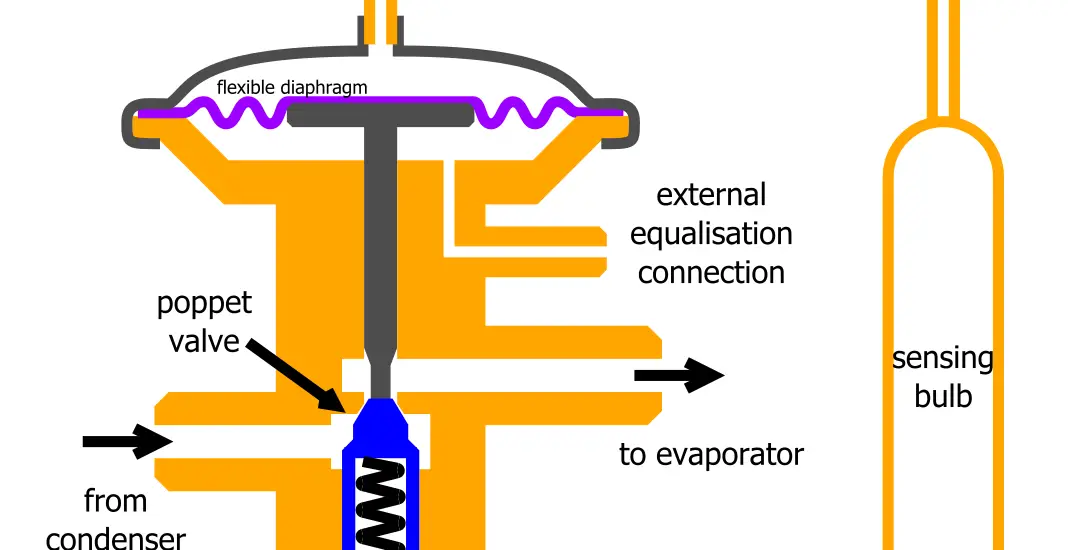Understanding the expansion valve bulb position is a fundamental aspect of maintaining and optimizing various refrigeration and air conditioning systems. This guide will provide a detailed look at the expansion valve bulb, including its function, the importance of proper placement, how to sense its position, and how to troubleshoot and maintain it properly.

Table of Contents
Understanding the Expansion Valve Bulb
The expansion valve bulb, part of the thermal expansion valve (TXV), is crucial in cooling systems. It is a small, sealed container filled with a specific fluid, designed to sense temperature changes in the evaporator coil. Here’s a breakdown of its role:
Functionality: It senses the temperature of the evaporator coil, responding to any changes.
Interaction with TXV: The bulb’s response to temperature changes affects the TXV’s function, controlling how much refrigerant is allowed into the evaporator coil.
Impact on Efficiency: Properly functioning expansion valve bulb ensures optimal system performance, maintaining desired temperature levels, and minimizing energy consumption.
Connection to Other Components: The bulb is physically connected to the TXV via a small tube, ensuring the proper transfer of pressure signals.
Positioning the Expansion Valve Bulb
The placement of the expansion valve bulb is paramount to its function. Incorrect positioning can lead to various issues. Here’s a detailed look at proper positioning:
Placement on Suction Line: The bulb must be attached to the suction line, making complete contact. Any air gaps could lead to incorrect temperature readings.
Orientation: Positioning at the 10 or 2 o’clock position on horizontal pipes and upright on vertical pipes ensures accuracy. Incorrect orientation may cause misreading.
Protection from Heat and Damage: The bulb must be placed away from heat sources and potential damage. It must be properly clamped and insulated to prevent any functional disturbances.
Manufacturer’s Guidelines: Always refer to the manufacturer’s manual for specific instructions related to your system’s make and model.
Check out these other related articles…
4 Stuck Expansion Valve Symptoms: A Complete Guide
Clogged Expansion Valve Symptoms: A Complete Guide
How to Test Expansion Valve in 6 Easy Steps
Expansion Valve Troubleshooting: 4 Easy Steps to Follow
Electronic Expansion Valve Controller: A Comprehensive Guide
Sensing Functions of the Expansion Valve Bulb
The sensing functions of the bulb are central to the cooling system’s operation. Here’s how it works:
Temperature Sensing: The bulb’s fluid expands or contracts with temperature changes, creating a pressure signal that is sent to the TXV.
Pressure Control: The pressure signal controls the TXV’s operation, determining how much refrigerant enters the evaporator coil.
Importance of Accuracy: Any inaccuracies in sensing can cause overfeeding or underfeeding of the evaporator with refrigerant, causing inefficiencies or system breakdown.
Interaction with Other Components: The bulb’s sensing ability must be synchronized with other system components to ensure a balanced and efficient cooling process.
Troubleshooting Expansion Valve Bulb Placement
If you face cooling system issues, the bulb’s placement might be a culprit. Here’s a detailed guide to troubleshooting:
Inspect Placement and Orientation: Regularly check the bulb’s positioning to ensure it complies with guidelines. Any deviation can cause system issues.
Check for Physical Damage: Examine the bulb for any damages or leaks that might affect its temperature-sensing ability.
Consult Professional Assistance: Persistent issues may require professional diagnosis and repair. Trained technicians have the tools and knowledge to fix any problems related to the expansion valve bulb.
Regular Maintenance: Regular maintenance and inspections can preempt issues and extend the cooling system’s lifespan.
